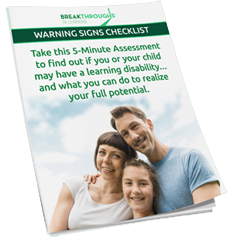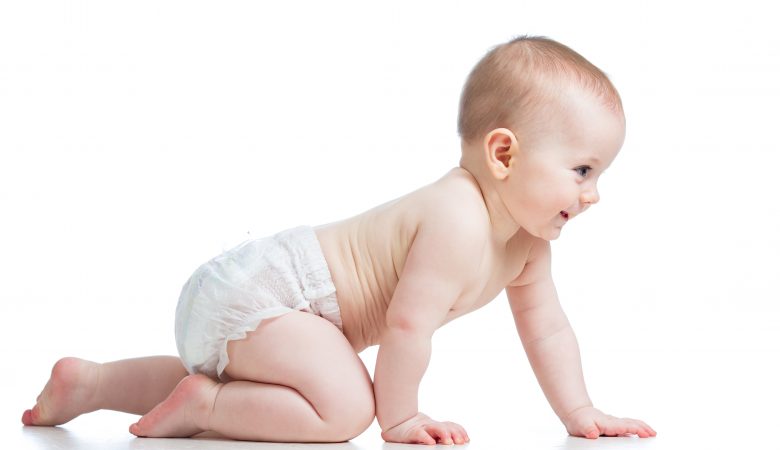
Does it affect life at home, at school or at work?
Take 5 minutes to complete the Warning Signs Checklist and discover whether you or your child could have learning difficulties that are impacting your life, and what to do about it.
Take The Free Warning Signs Checklist!
Brain development moves quickly in a child’s first year. The brain processes touches, smells, sees, and tastes within an active environment.
Research shows crawling is an important element in these processes. Bodily strength, brain development, and perception are all developed through crawling. First steps are a big milestone and parents often encourage early walking by helping the child along. Modern society often wishes for children to skip crawling and walk as early as possible for convenience, however, crawling helps brain development in ways walking early does not.
Coordination
In early development, brain hemispheres are learning to coordinate. One way this happens is through bilateral coordination or the skill of working both sides of the body at the same time (tandem).
Crawling involves moving the right arm at the same time as the left leg to be followed by the left arm and right leg movement. This part of brain development allows each side to be exercises equally and also coordinate. Human development is very dependent on both sides of the brain being connected and crawling encourages that.
Tactile Skills
While crawling, babies learn different surfaces and textures which increase sensitivity in the hands. Babies will also learn changes in elevation, such as a dip in the floor or a sudden drop as with stairs, to develop the ability to assess possible dangers.
In addition to brain development, crawling also enhances muscle development. Crawling strengthens wrists, hands, elbows, shoulders, and the spinal column. The strength translates into fine motor skills that are helpful when learning to write or use silverware. It is not uncommon for children who did not crawl to exhibit messy handwriting or experience difficulty with upper body strength, such as climbing monkey bars at recess.
Visual Skills
An important lesson of brain development involves assessing objects. Dropping or throwing an object puts it further away and necessitates movement to retrieve it again. Likewise, some objects, like trees, remain stationary and others, like toys, can move away.
Crawling helps develop visual skills that assess the differences between movable and stationary objects. Stationary objects, like trees or furniture, must be navigated around while toys can be picked up and moved. This develops spatial skills that differentiate between stationary and moveable objects and how to assess them. Move around it, move to it, or pick it up? Those are the questions the brain learns to ask.
The brain will also develop binocular vision which helps the eyes work as a team. While crawling, babies first look into the distance to focus on a goal and then back at their hands to start crawling. This requires eyes to adjust and focus. This further develops cooperation between brain hemispheres and helps the eyes with reading and writing.
Efficient Navigation
Crawlers tend to explore what ignites their curiosity and will go to what interests them instead of hoping it comes to them. The ease of the movement enhances confidence.
Navigation skills with crawling include speed, turning, and stop. Going too fast may mean hitting a stationary object or taking a tumble if elevation changes. Being close to the ground is a safe place to learn these obstacles and the importance of controlling speed before applying those same skills to walking.
If a child never was a crawler, do not despair. If the child is not crawling yet, encourage “floor play”, even if the baby just scoots along the floor. If she is already walking, encourage exploration and physical activity to help strengthen both body and brain development. For young and old alike you can incorporate activities into play time that use crawling such as playing animals down on the floor or obstacle courses. Neurodevelopmental programs like the Spacewalk are great for brain development in children 4+, make learning fun and can be done alone or as an entire class. While crawling is the best way to develop these portions of the brain, young brains are also resilient enough that gaps can be filled by encouraging other activity.
Subscribe to our newsletter and receive regular articles and resources to help you or your child perform better at school, home or work.
suscribe now
Post Your Comment Below